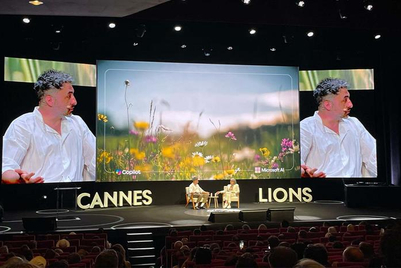
Social media. On one hand, the single biggest opportunity facing agencies today. On the other, perhaps the most misunderstood phrase in our industry.
Let’s start with the opportunity. Aside from the sheer dominance of the word ‘social’ in media headlines around the world, the demand for helping clients understand, and take advantage of ‘social media’ is growing exponentially no matter how you measure it. Virtually every survey of top marketing executives around the world lists social media as the area they intend to increase spending in this year, and over the next few years. Recent studies by Booz and Company, IBM and Campaign Asia-Pacific all support this.
And this increase in spend impacts two key areas. First, of course, there is consumer behaviour. In Asia-Pacific, according to ComScore, social media is dominating internet usage and there are more than 750 million regularly using ‘social media’ as of October 2011.
Secondly, there is a rapidly growing belief among marketers that social media will, and does, deliver results. In this years’ Marketers’ Survey by Campaign Asia-Pacific (March 2012), a staggering 35 per cent of marketers listed ‘social’ as the most effective medium over the next three years. It’s closest rival was television at 14 per cent and mobile at 13 per cent.
So far, the evidence backing up this belief is encouraging. Over the last year or so, in countries around the world ranging from France to Saudi Arabia to China to Korea, and for clients like McDonald’s, Diageo, KLM and Telstra—across a number of sectors—we’ve seen campaigns where social media was either the primary or only medium to deliver impressive sales results. In some cases, average sales are more than twice those resulting from a similar ‘traditional’ campaign, and return on marketing investment (ROMI) orders of magnitude greater.
We’ve also seen highly positive impacts on brand engagement and consumer advocacy when branded communities are constructed on the principles of openness, regular engagement, and true value exchange.
All of this is great news for those of us in the digital space in general, and who understand how to succeed in the social media space.
Now, of course, comes the ‘but’. I fear that ‘social media’ is rather misunderstood and, more specifically, that it’s viewed as a silver bullet in our fragmented, complex, ‘always on’ media world. If clients don’t understand the rules of engagement—mainly those of transparency, honesty, value exchange and that the consumer really is in control—social media programmes can be ineffective at best or damaging at worst.
The good news is that we have an opportunity to direct and manage these rules of engagement. Developing strategic frameworks, working with marketers, to better understand and utilise social media across the business. It is having a huge impact across a number of areas of our clients’ business—way beyond what we’ve achieved in the past.
I believe social media has an immediate impact on consumer insight. It’s as easy as closely monitoring what people are saying about you, your competitors, or even your category, providing early warnings of potential issues and potential opportunities. The complicated aspect is making sure our learnings are implemented efficiently and effectively. We’ve helped many clients identify, and successfully launch, new products based on the insights gathered from our social listening activities.
Social media can also have a big impact on our employees both internally (internal communications) and externally. Employees are our clients’ most important brand ambassadors. When managed and utilised properly, social media can be a highly effective means to drive engagement between consumers and employees.
Finally, I must point out what I hope is the obvious: that to get great results, any social media programme, whether it be a campaign, for employee relations or consumer insight, must be planned in coordination with all other ‘traditional’ activities. We’ve seen time and again that the most effective ‘social’ programmes are properly integrated into all our other related activities.
Yes, it’s a social world. But it always has been.


.jpg&h=334&w=500&q=100&v=20250320&c=1)


.png&h=334&w=500&q=100&v=20250320&c=1)




.png&h=334&w=500&q=100&v=20250320&c=1)


.jpg&h=268&w=401&q=100&v=20250320&c=1)


.png&h=268&w=401&q=100&v=20250320&c=1)
.png&h=268&w=401&q=100&v=20250320&c=1)

